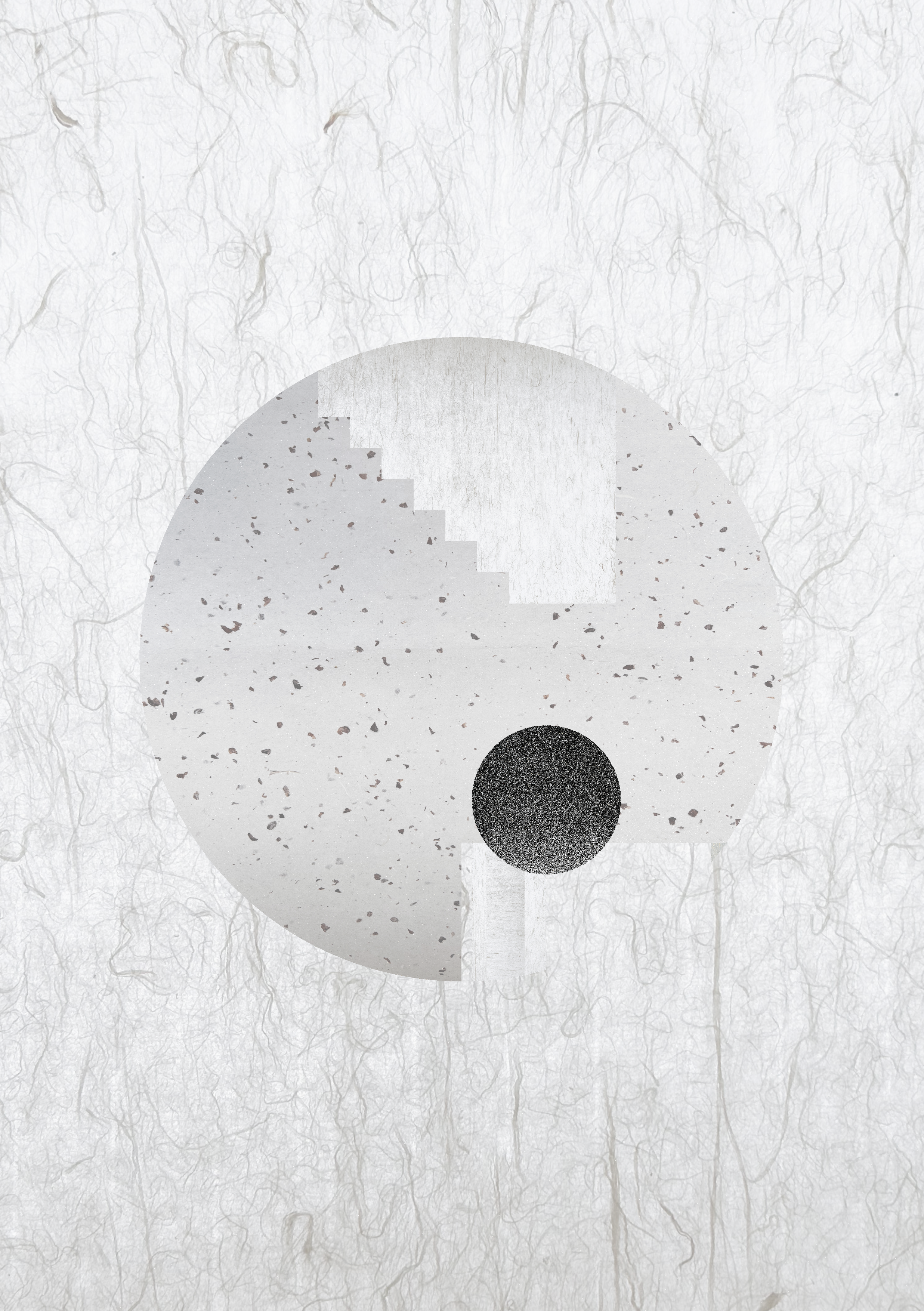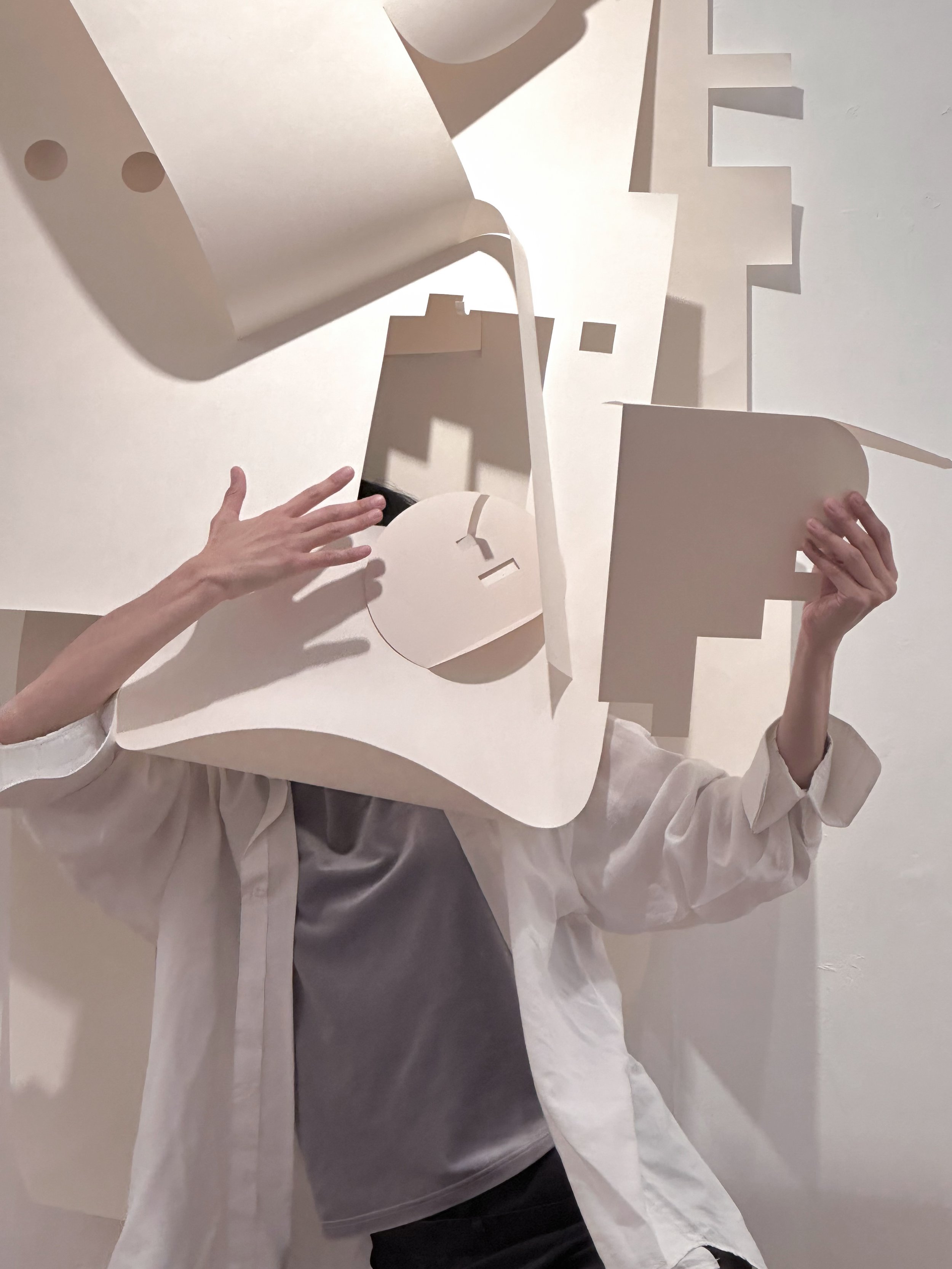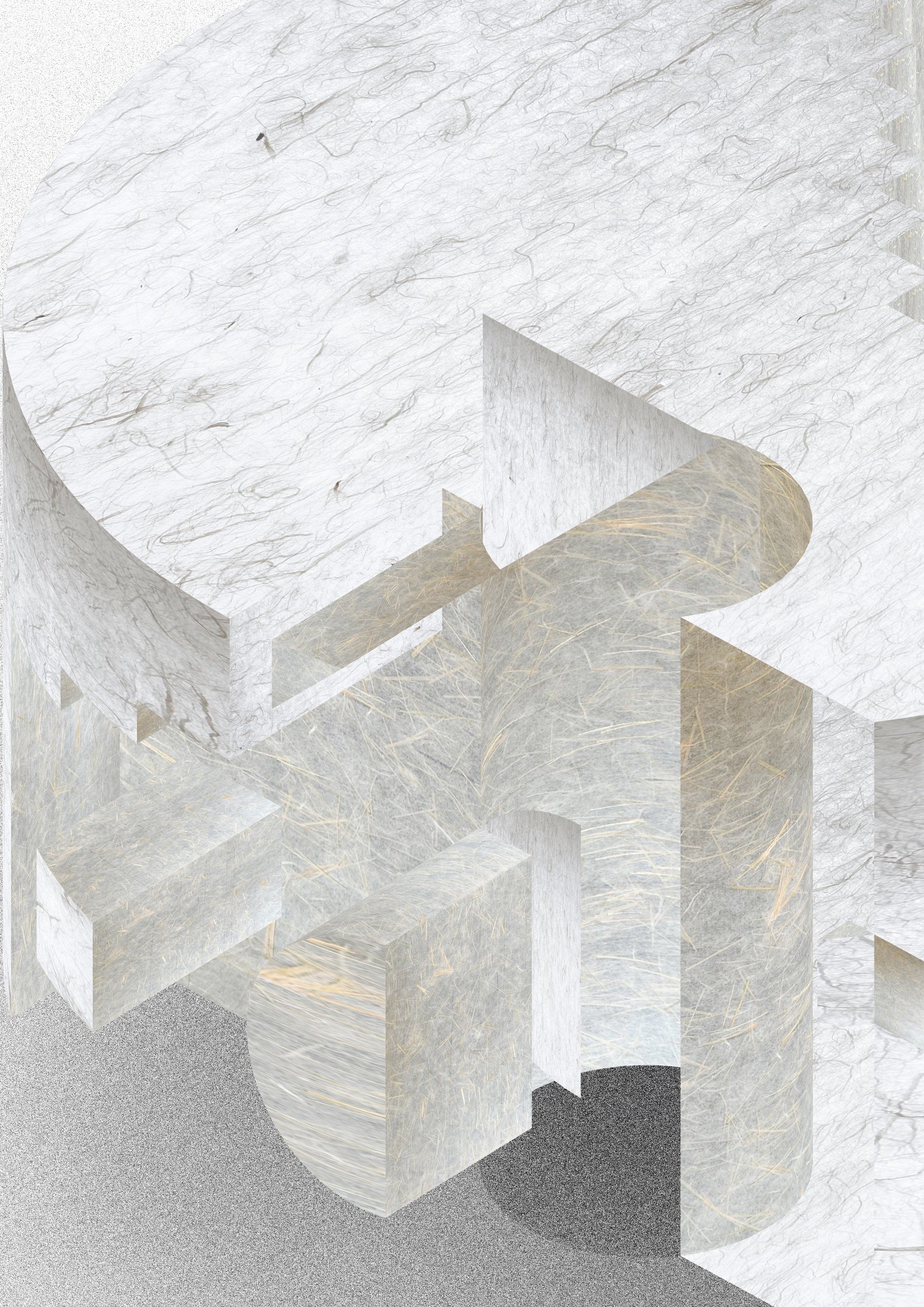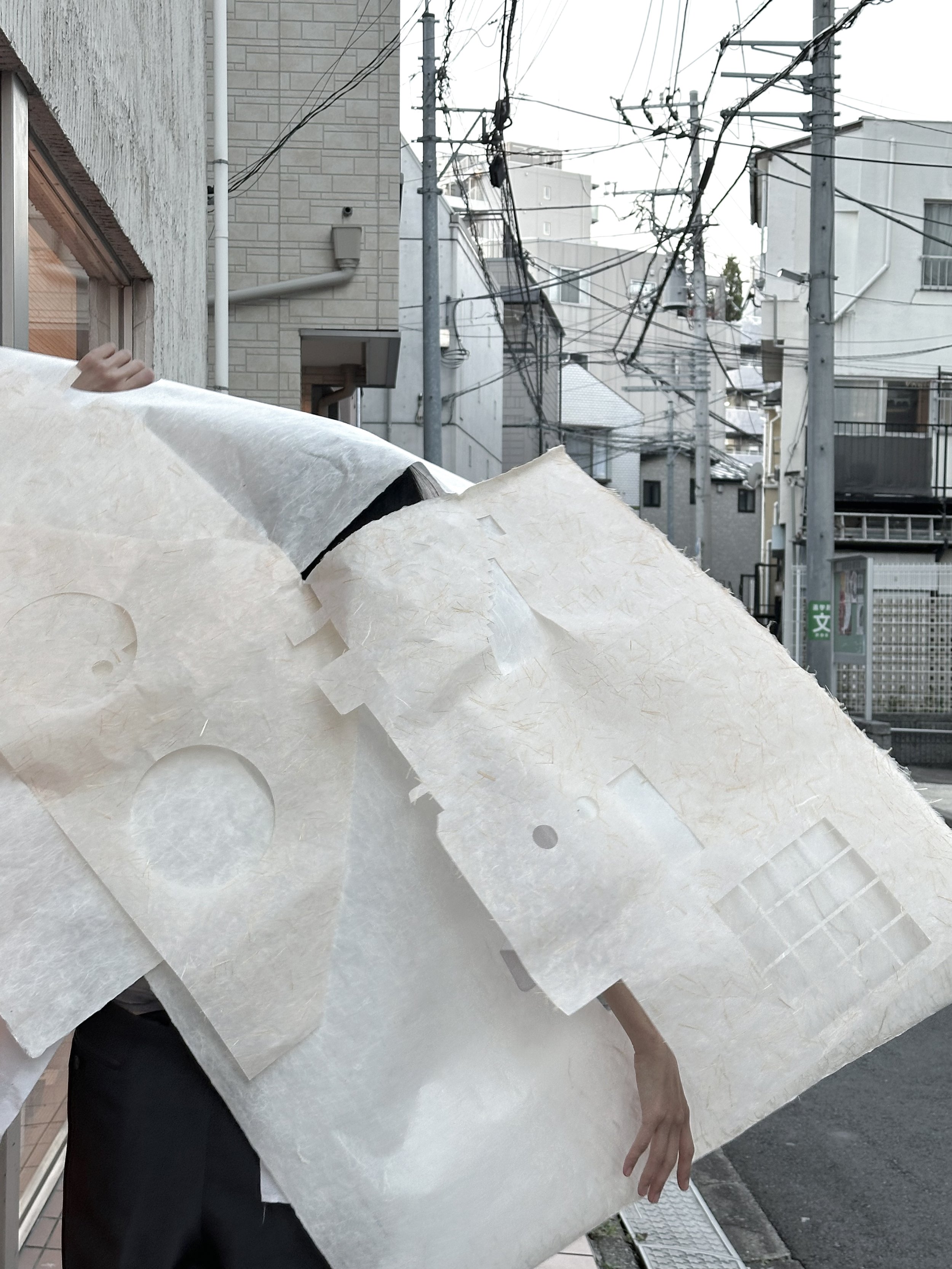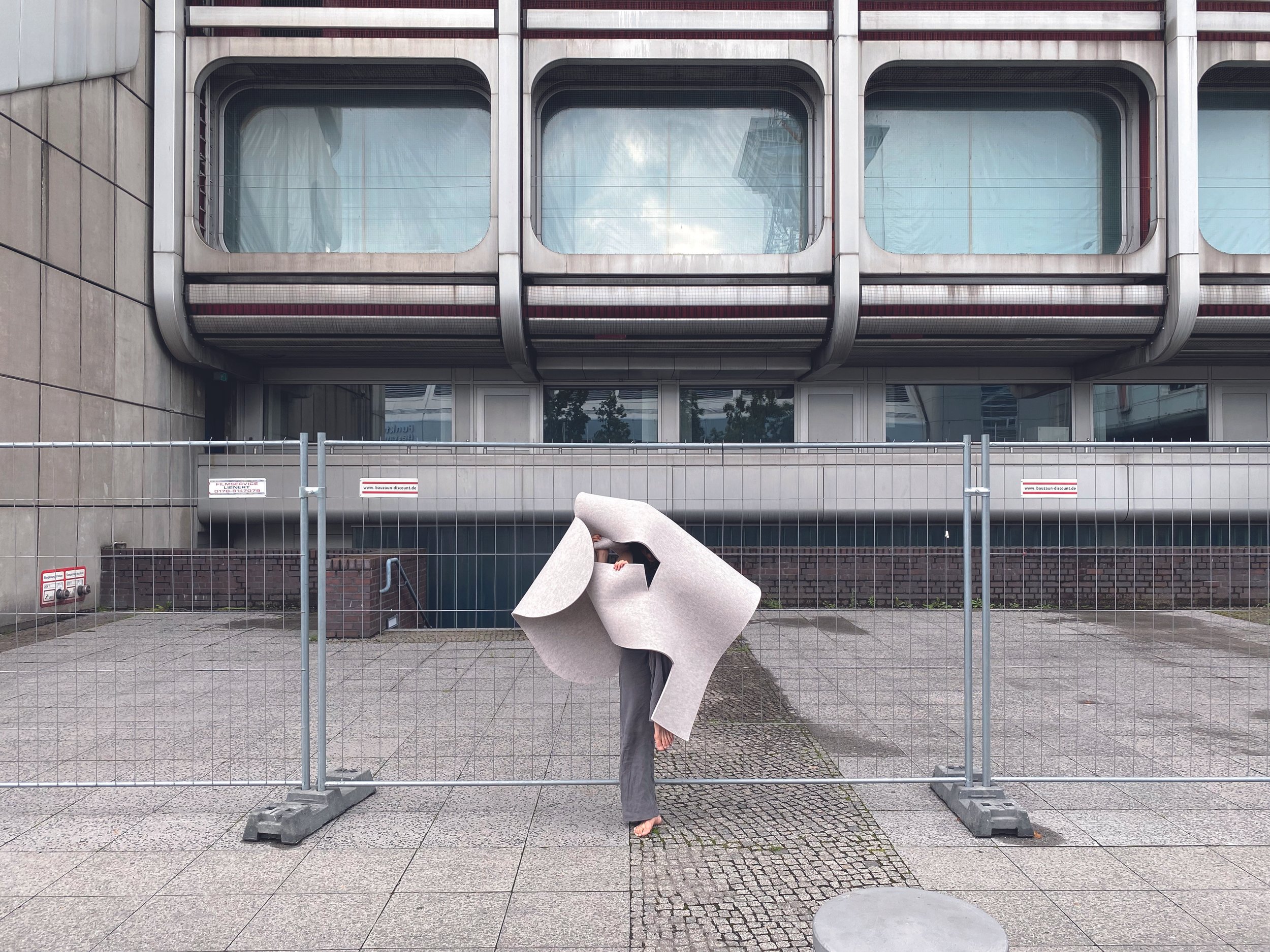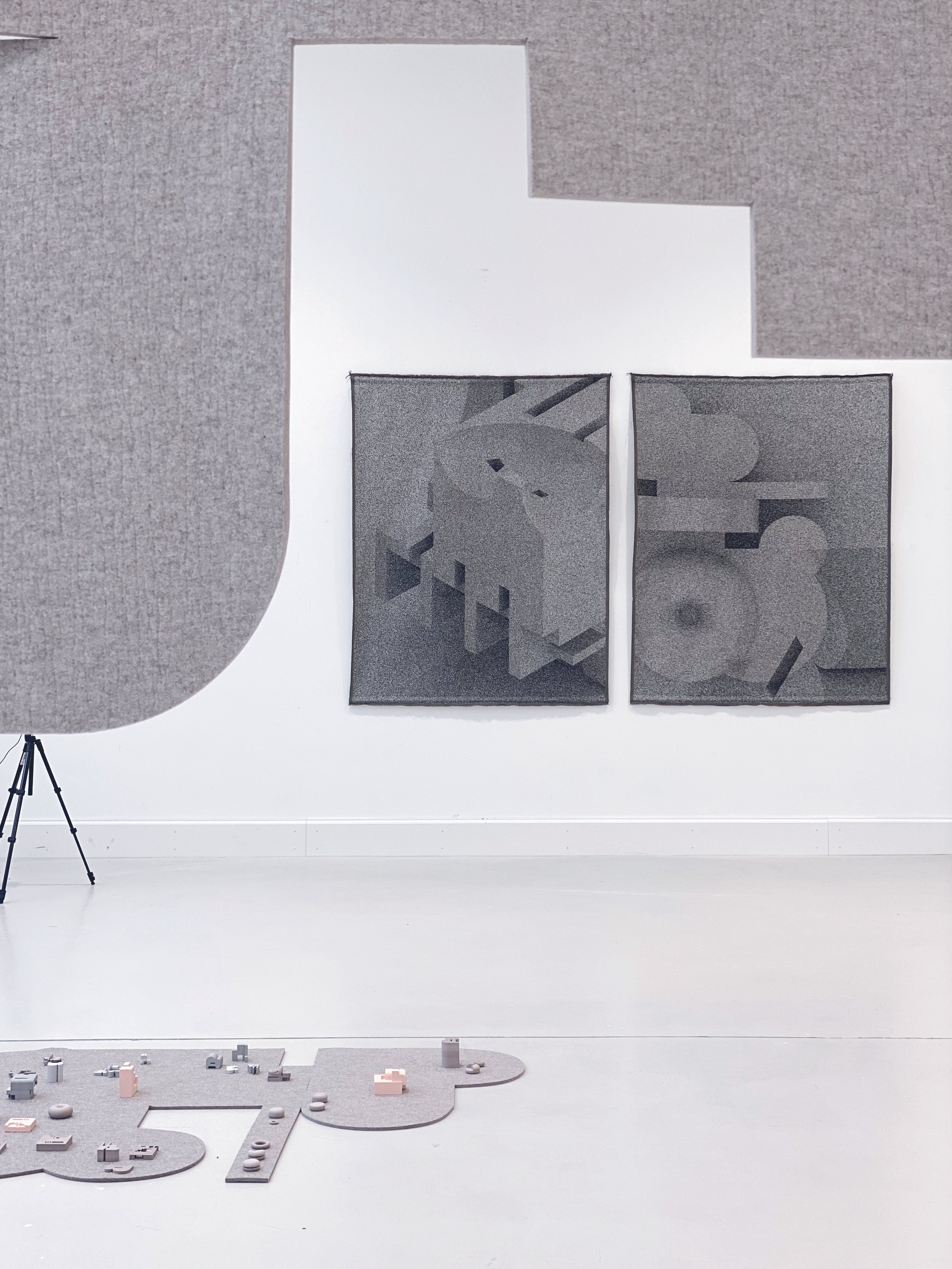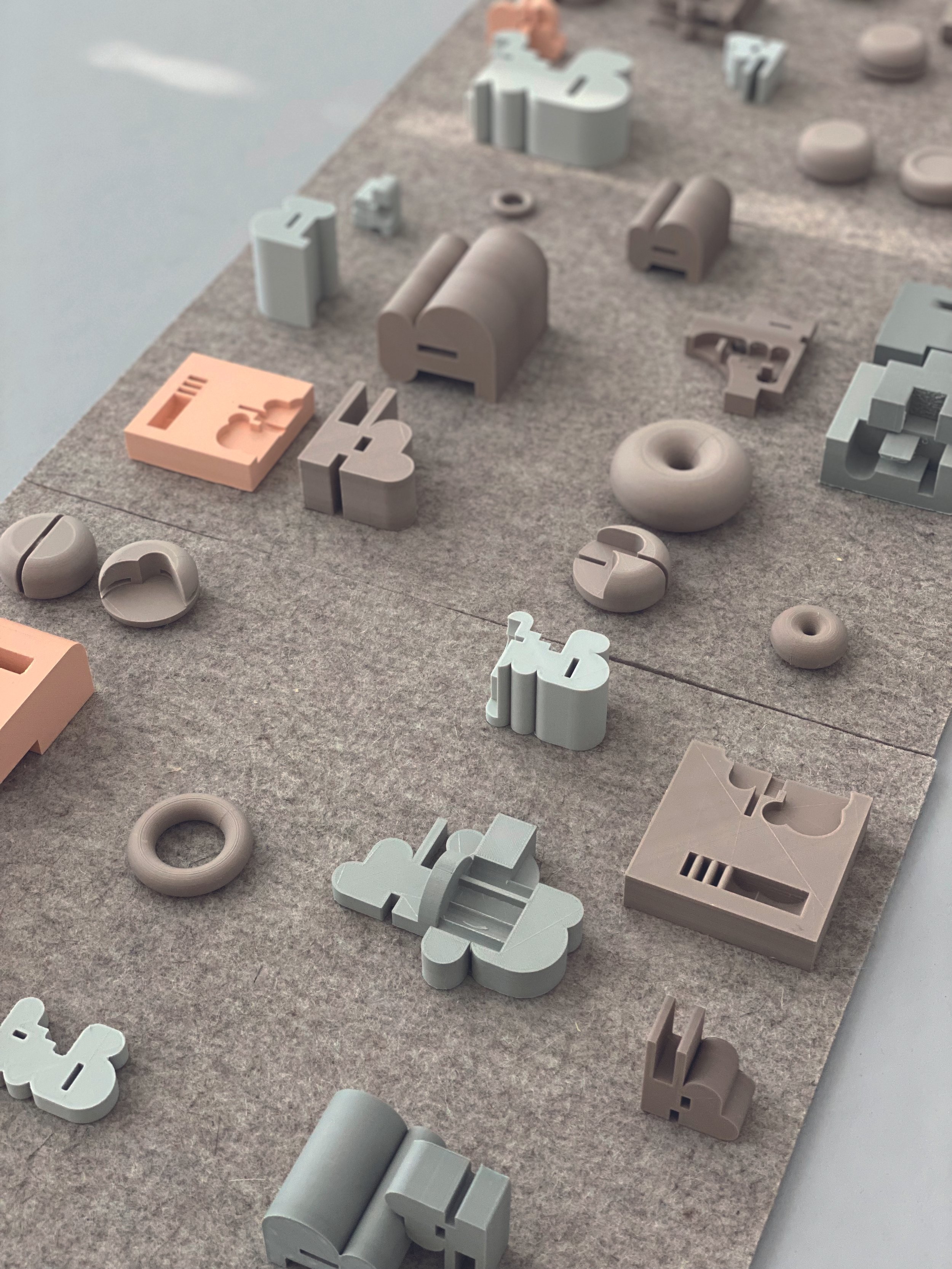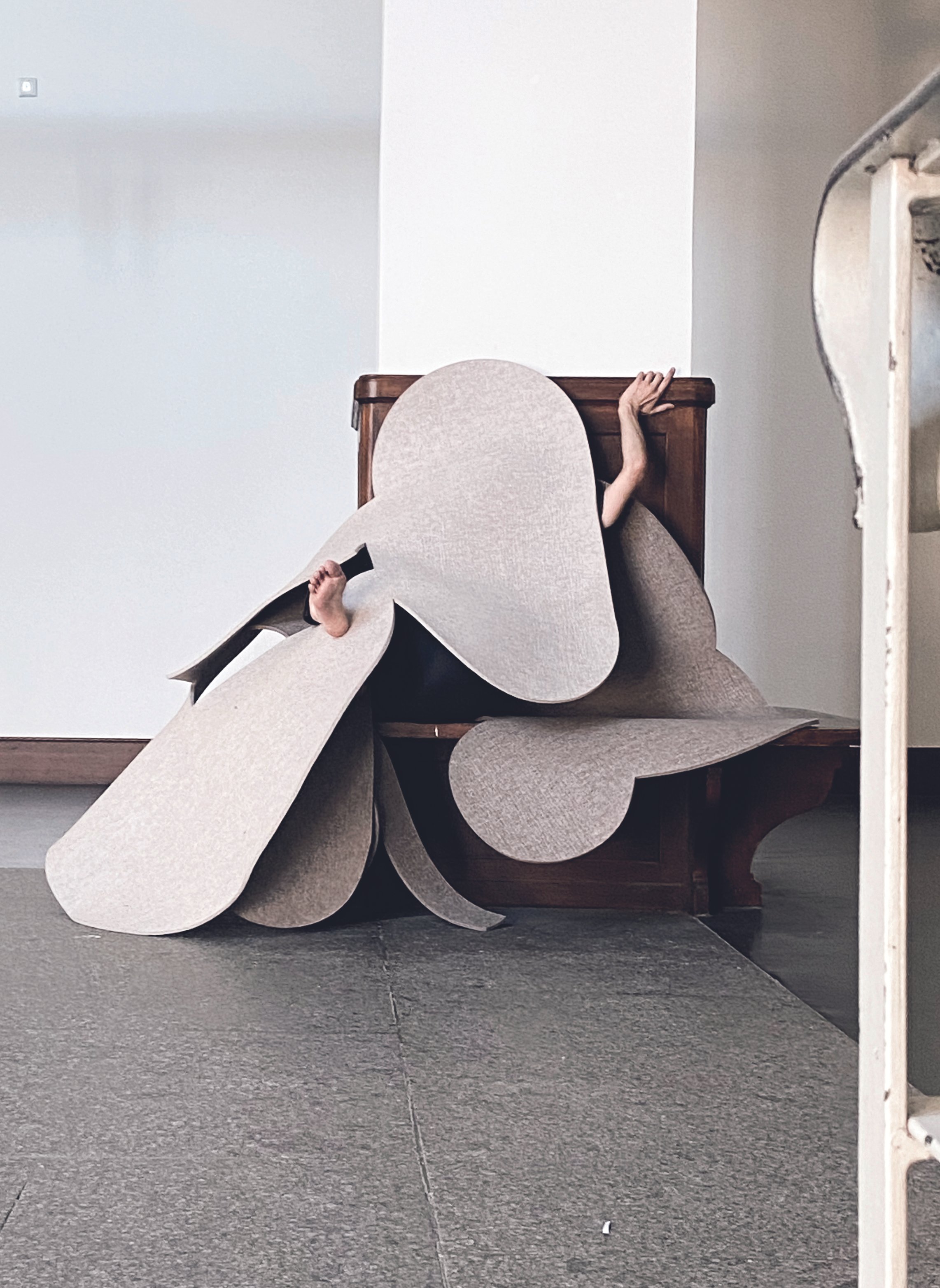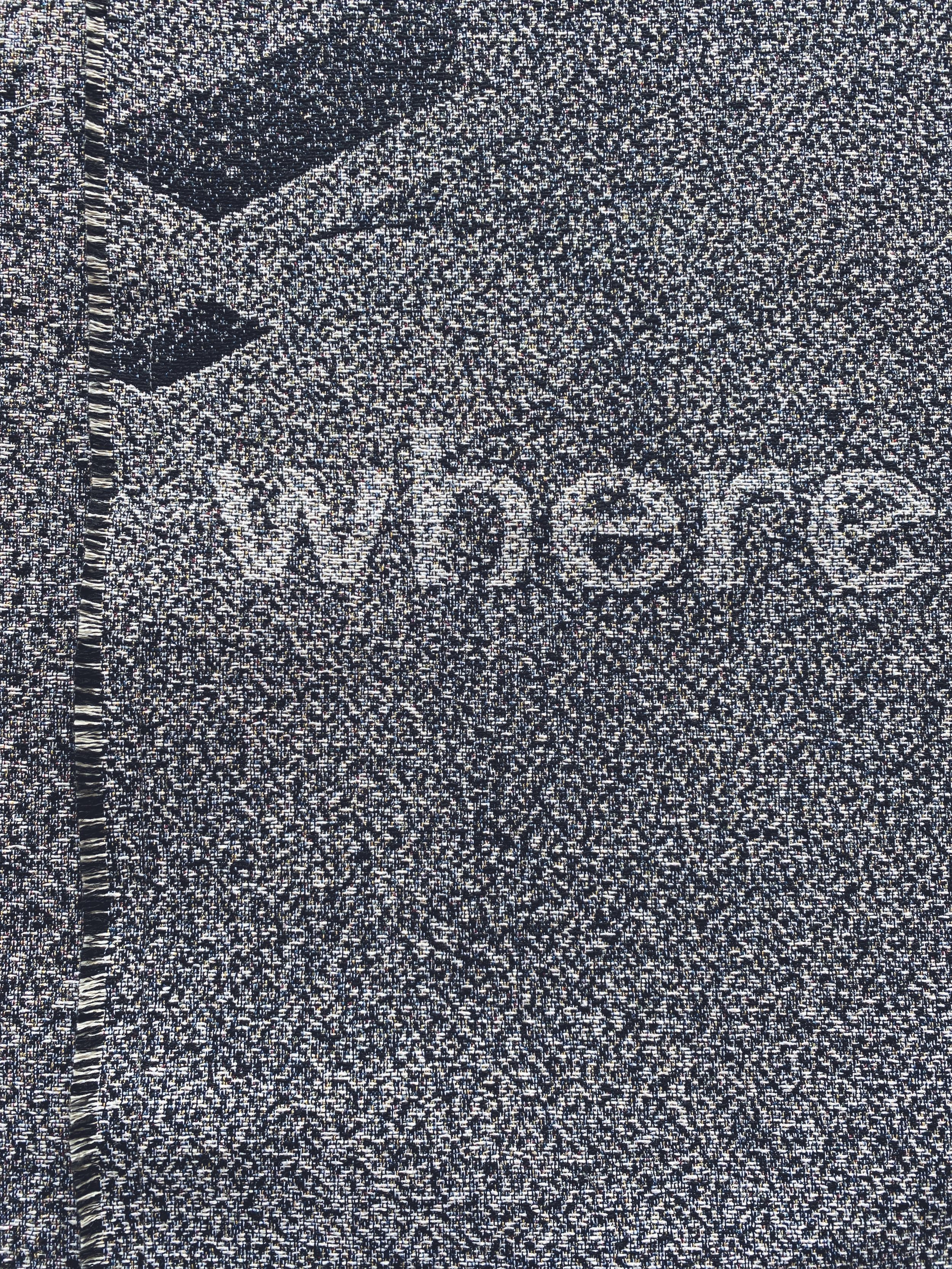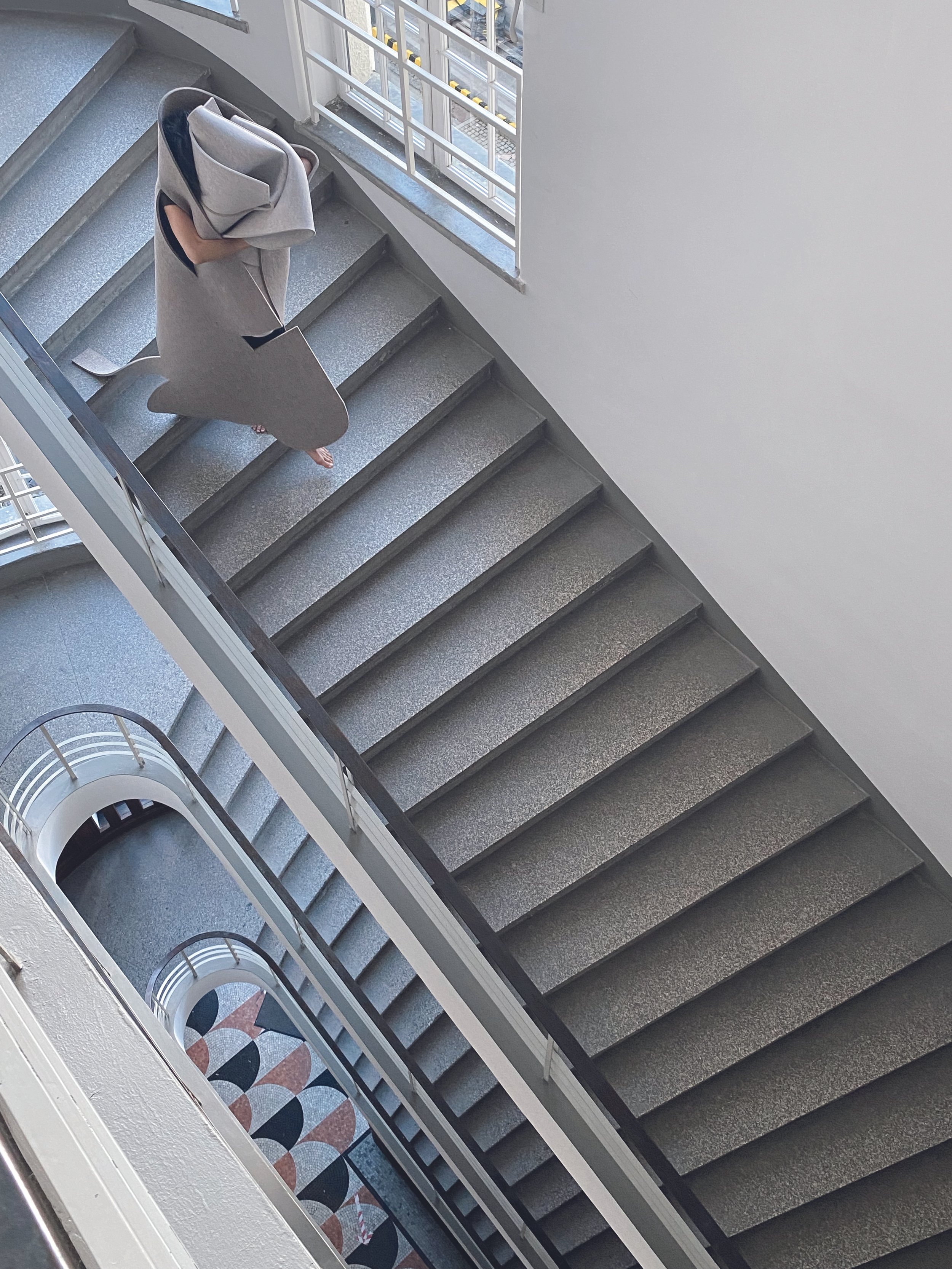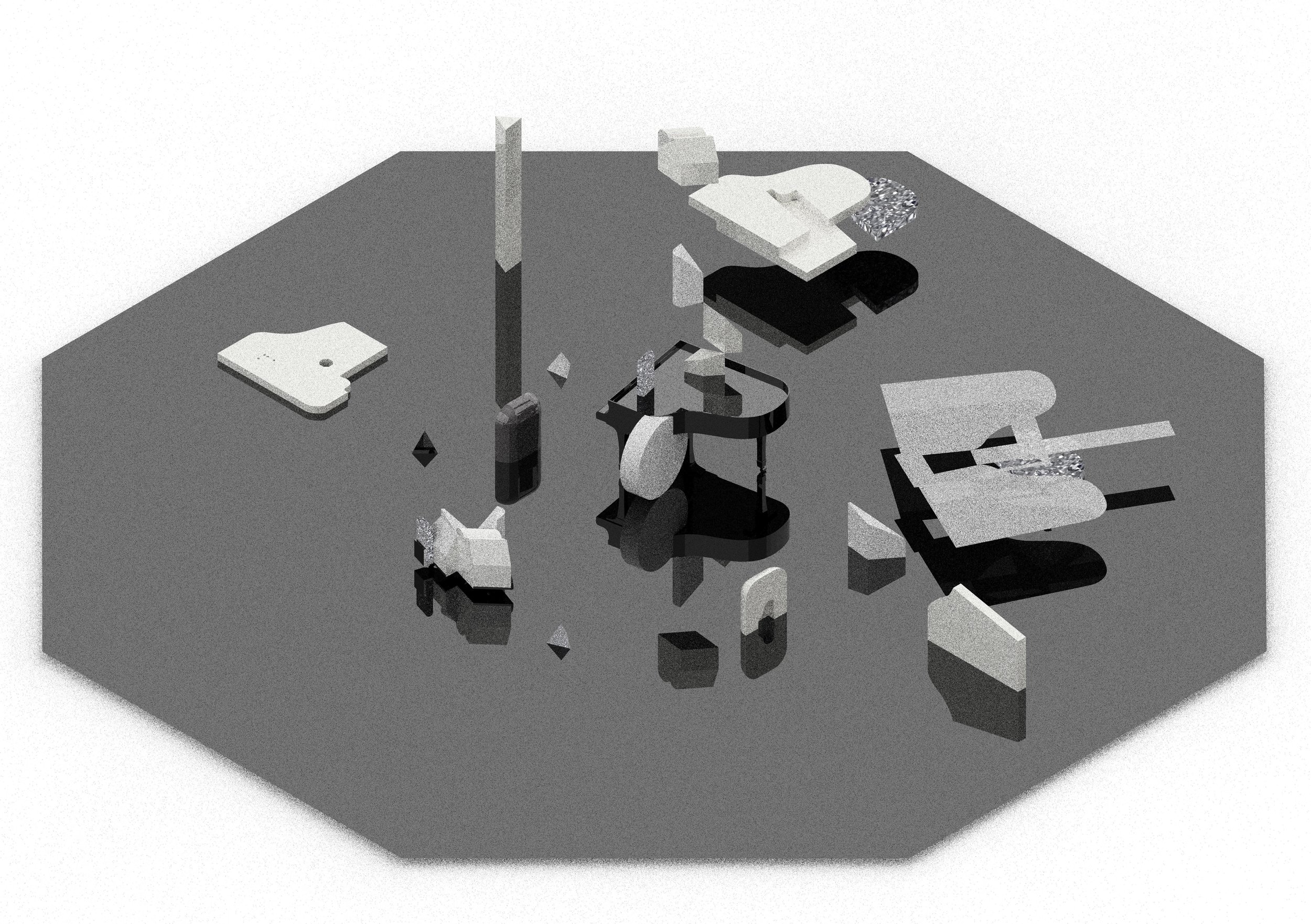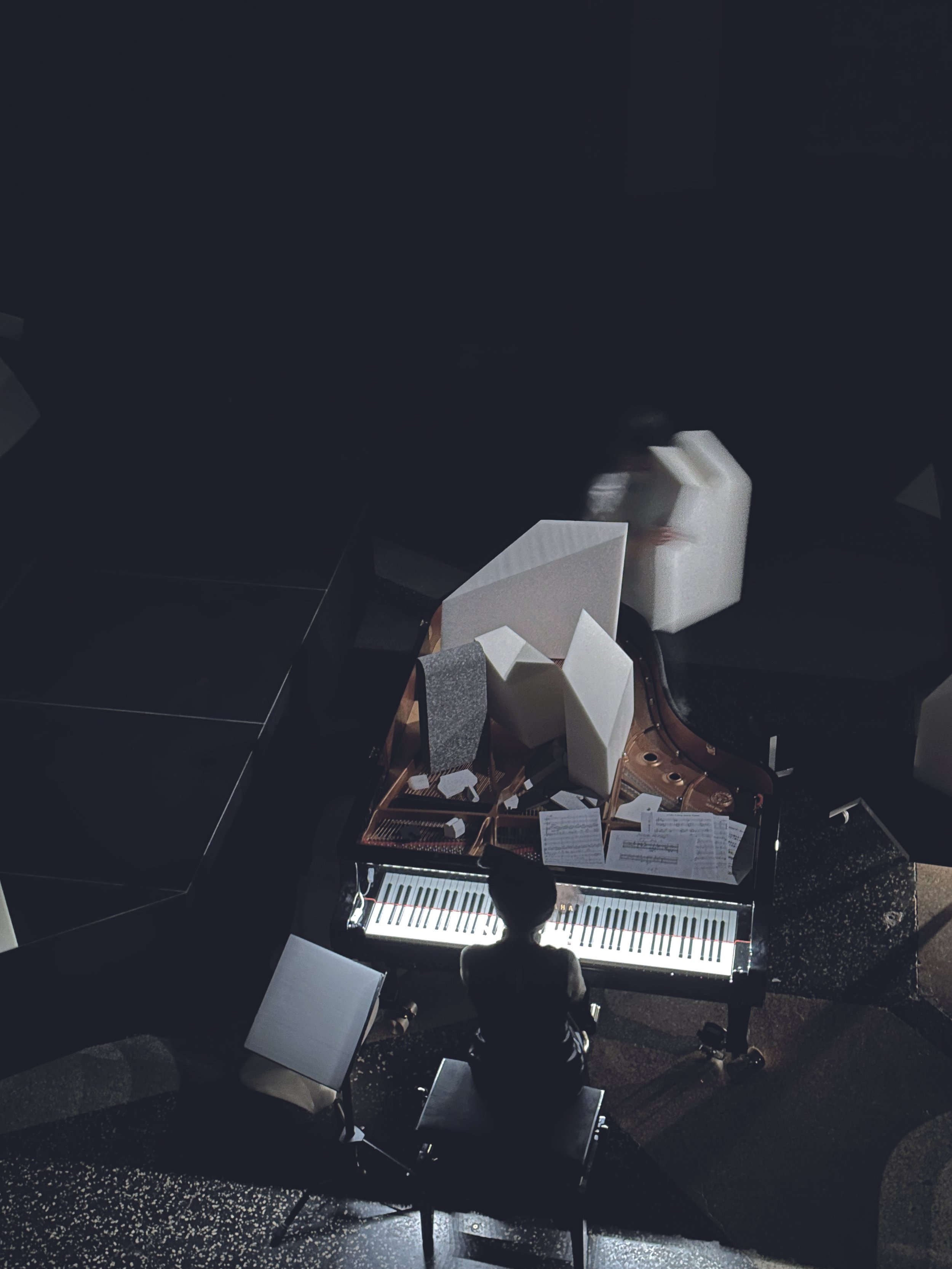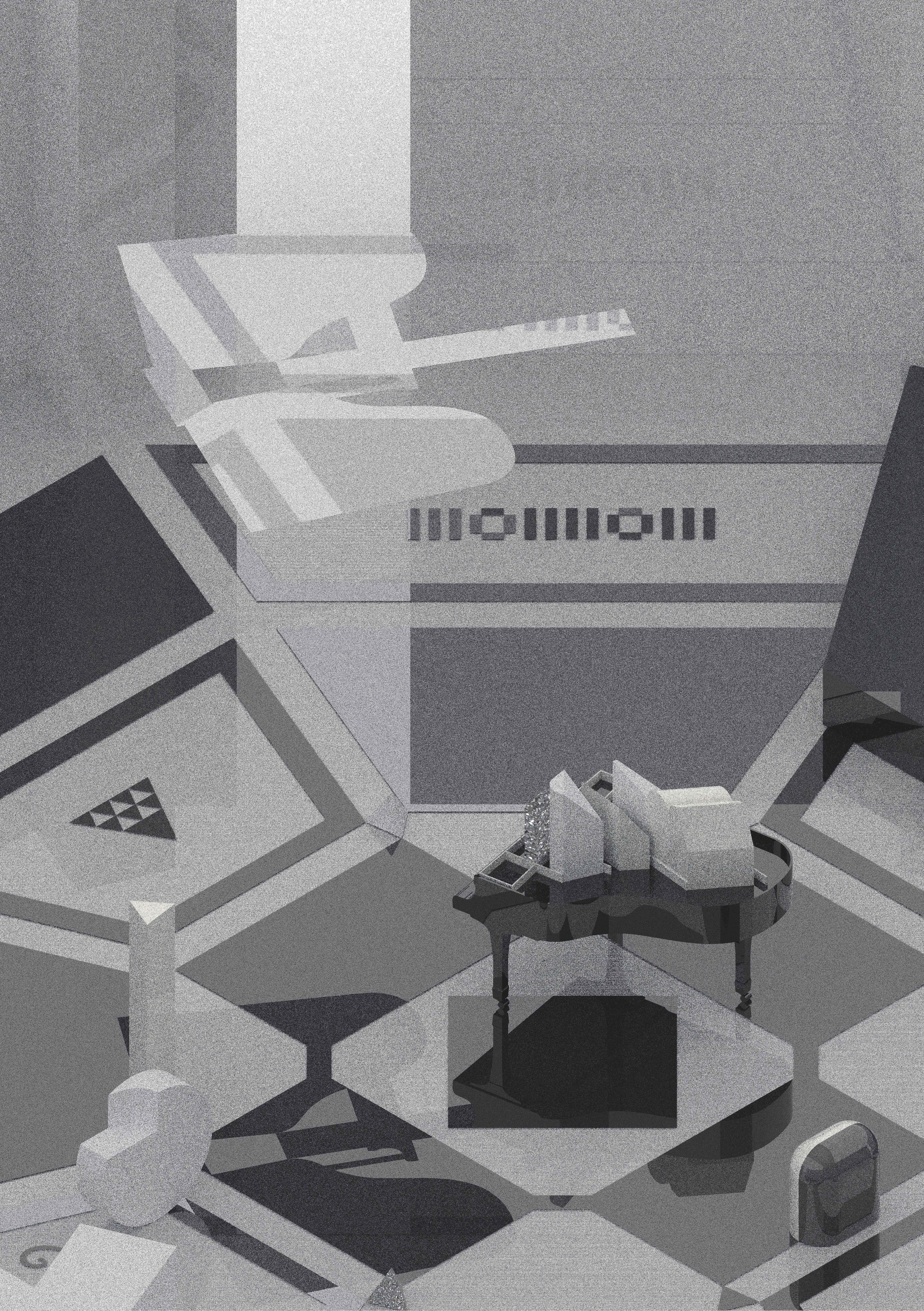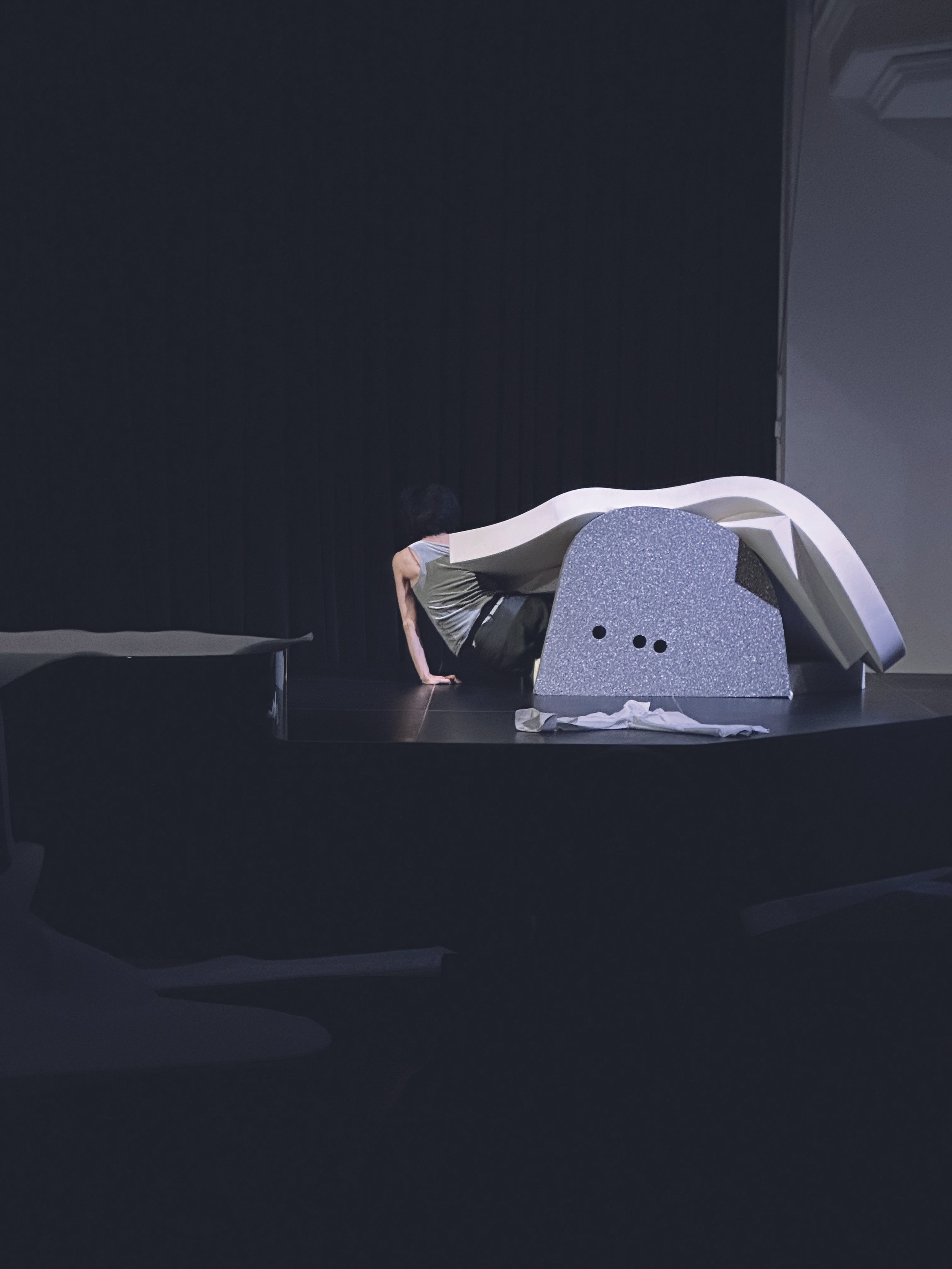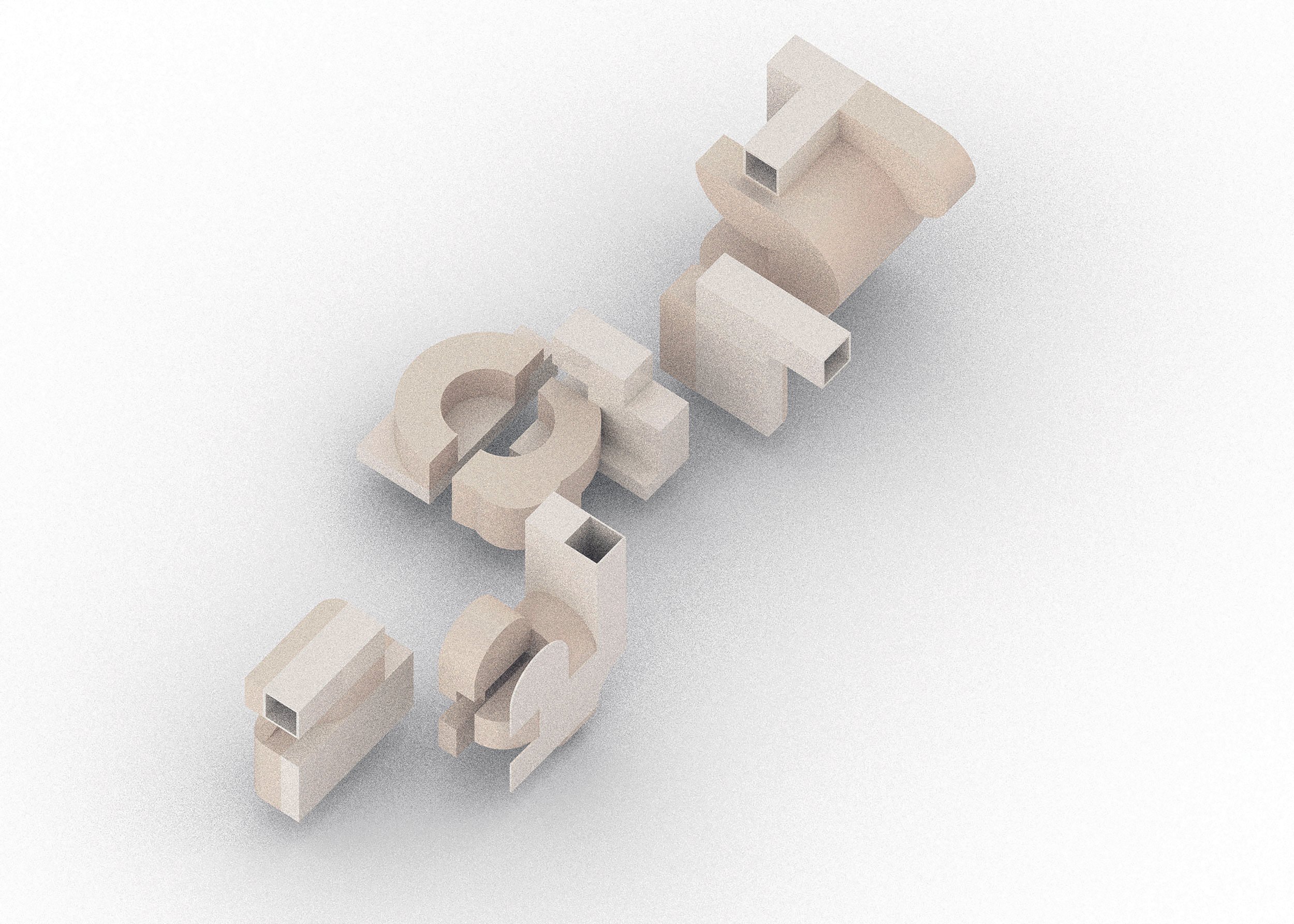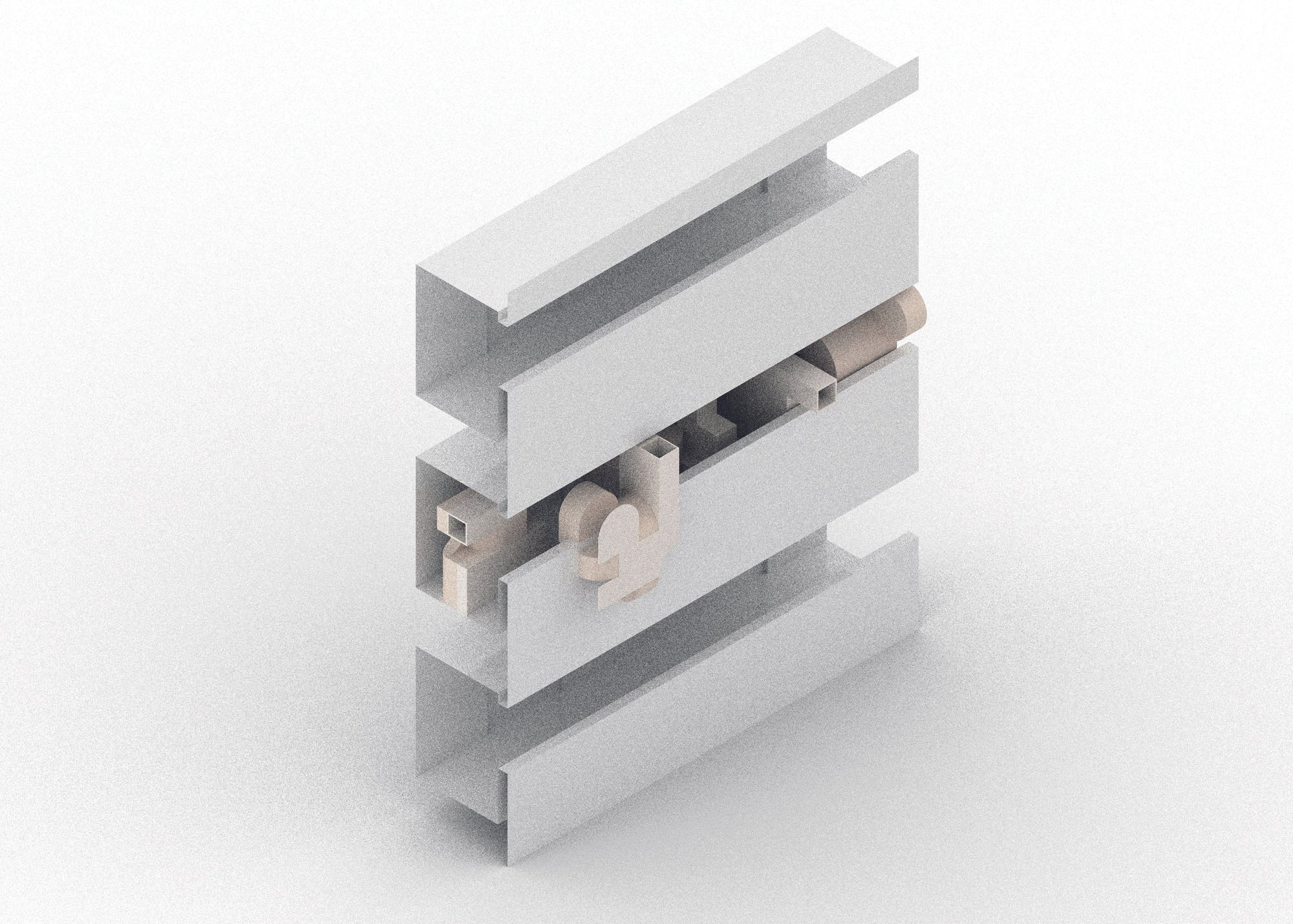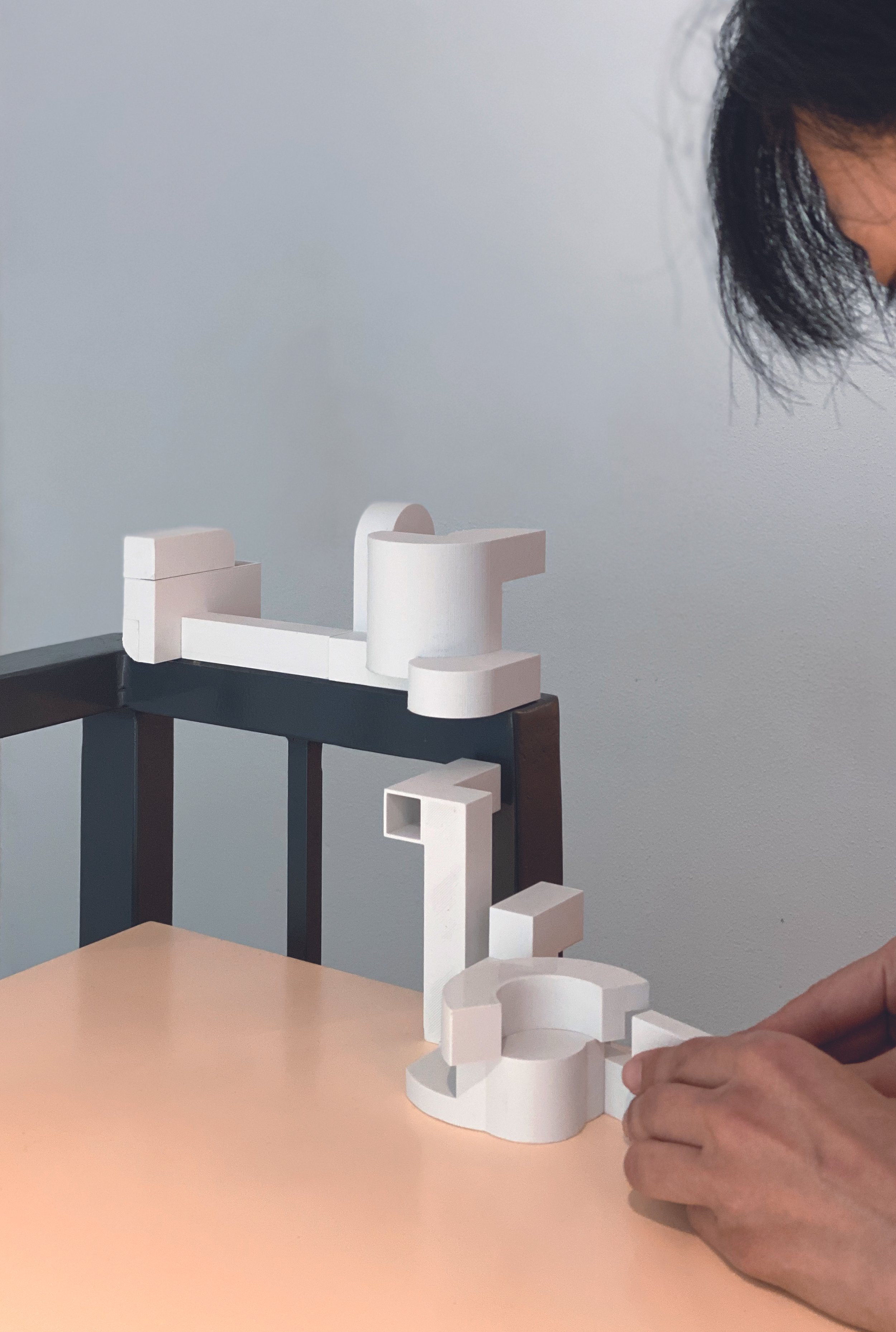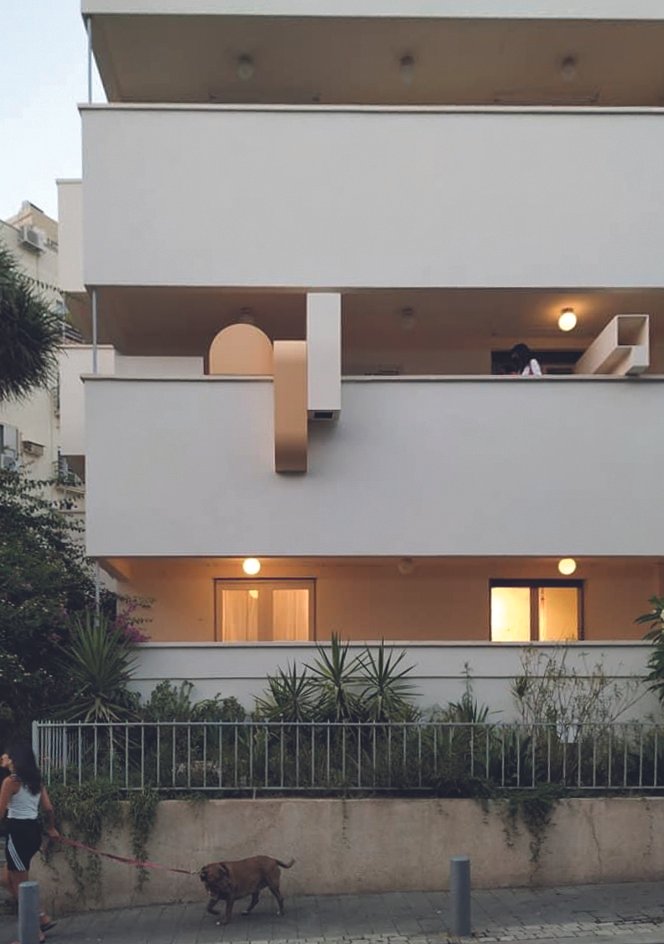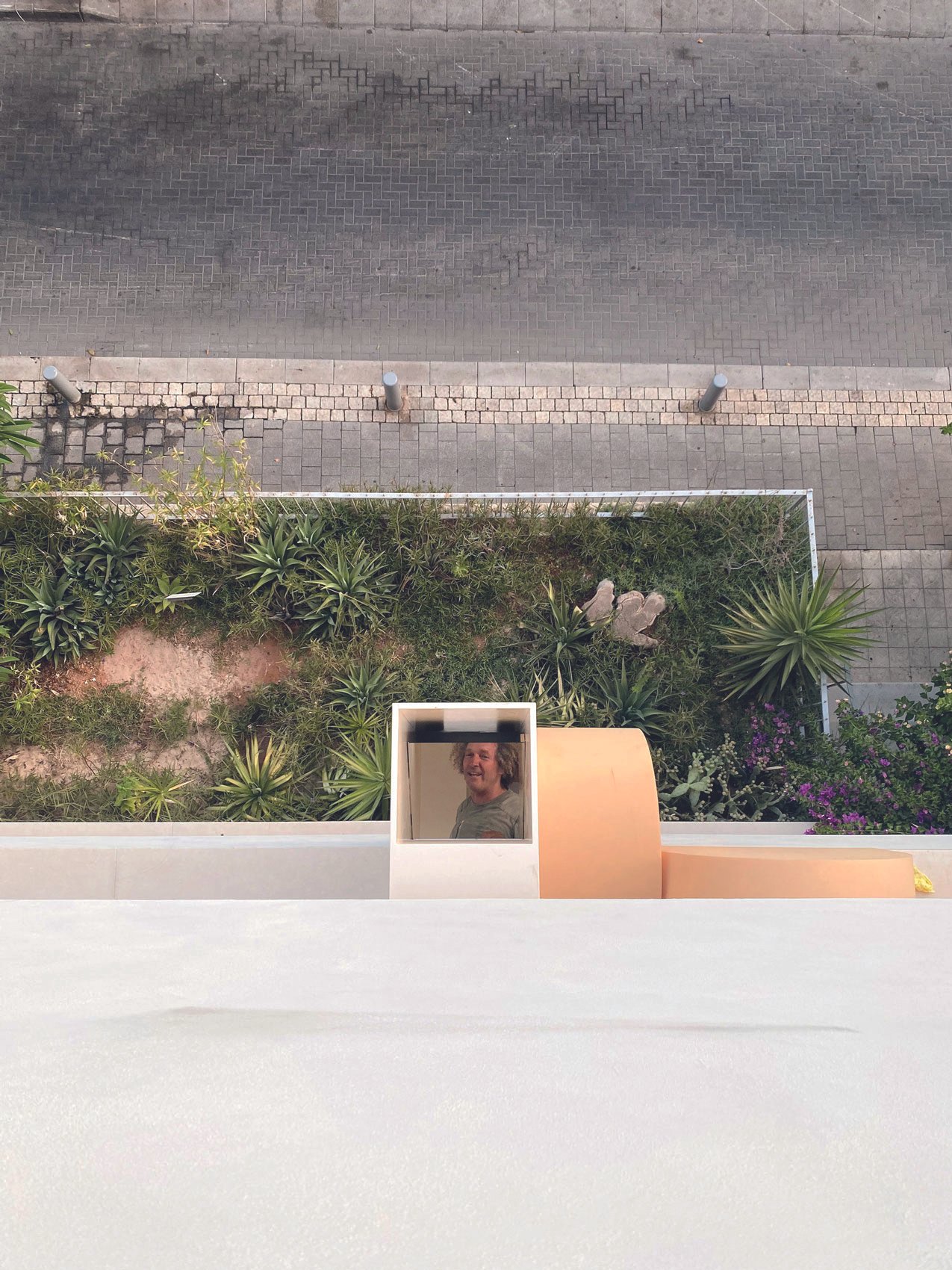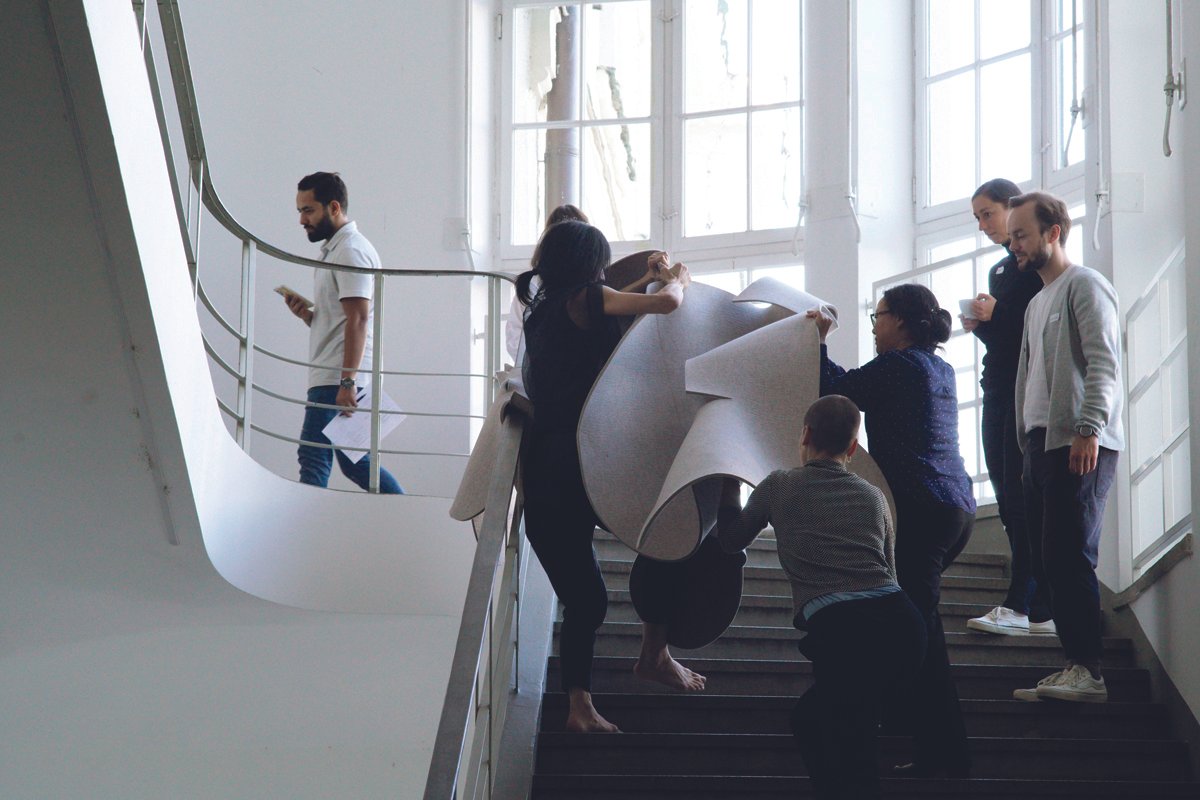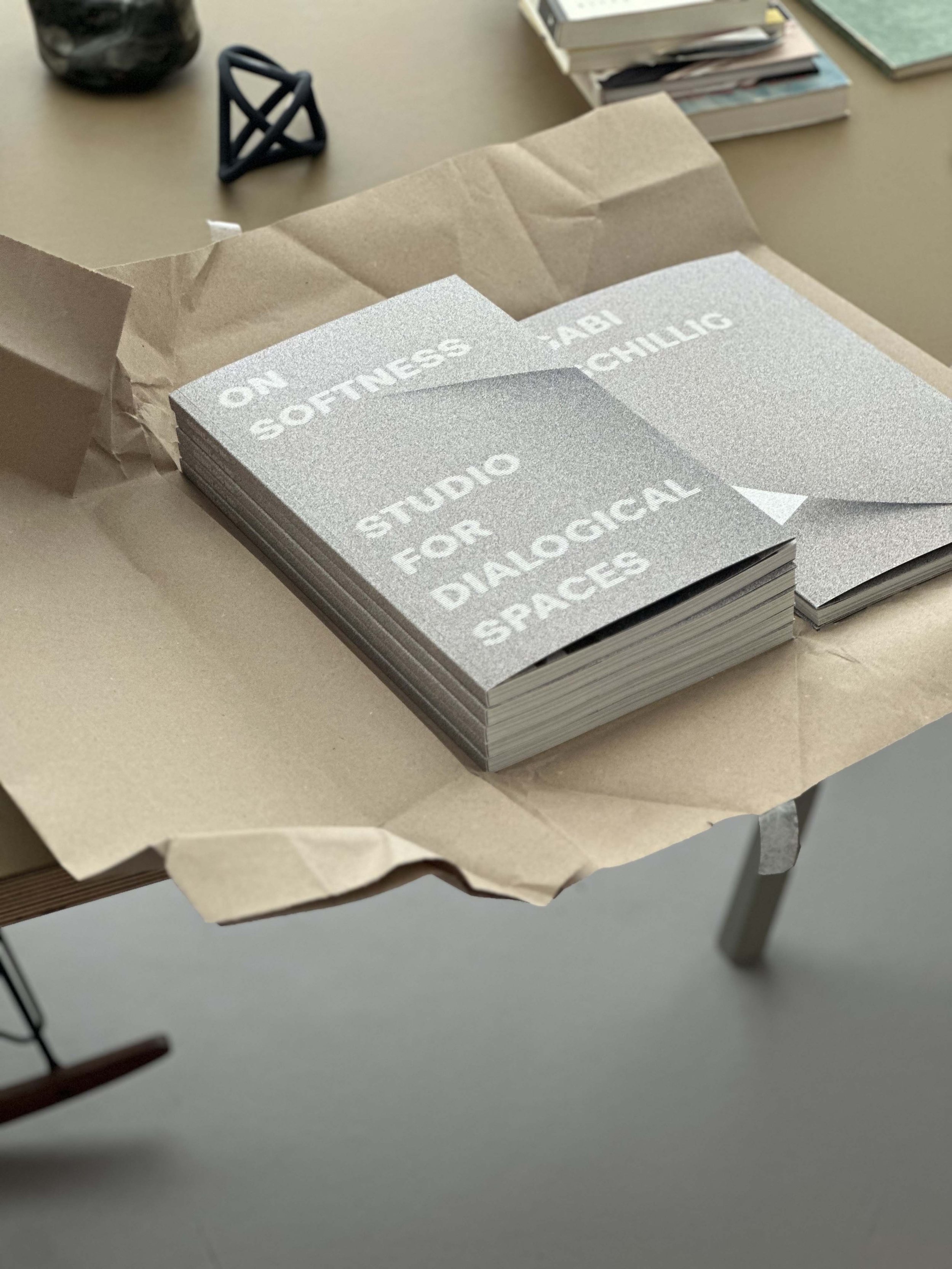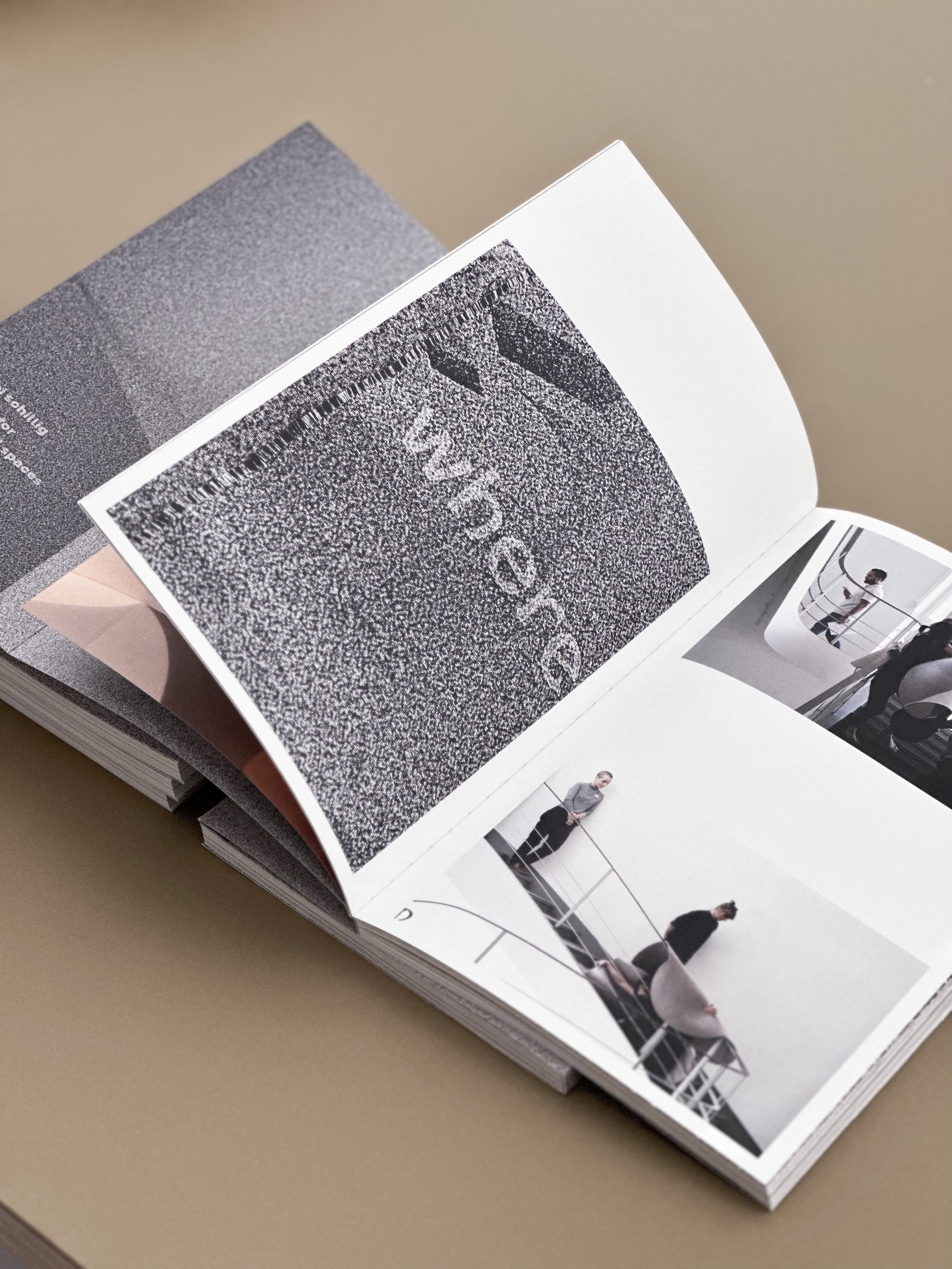Interview #25 Gabi Schillig
Please introduce yourself:
My name is Gabi Schillig. I explore and shape performative, dialogical spatial structures and spaces of communication.
#1 One of your most recent projects is the exhibition soft space machines - metamorphoses of (super)flatness, which was on show at the Kobo Chika Gallery in Tokyo in December. Tell us about the concept of the exhibition and what role the term (super)flatness plays in this context.
The project is a continuation of my interest in the notions of softness and ephemerality, both as spatial and material phenomena, but also in a broader sense as the fundamental characteristic of a spatial action. soft space machines explores, through experimentation, the relationship between surface, skin, body and movement in Japanese conceptions of space. The spatial and materialized vocabulary of the work - physical and digital spatial structures and chimerical architectonic fragments in various dimensions made from Washi paper - derive from both my fascination with the soft and transient material and spatial qualities of architectural skins and their relation to body and movement.
soft space machines – metamorphoses of (super)flatness (2023) kobo chika gallery tokyo / saiko neon / activated by yui kawaguchi
The spatial and performative geometries within the exhibition, activated by Yui Kawaguchi, emerged from my subjective perception, observations and fragmented peculiar memories of architectural elements, spatial atmospheres, situations and the material qualities of architectonic situations I encountered during my time in Japan: from traditional Japanese houses, to my interest in the work of Kazuo Shinohara (who refers to his architectural works as „space machines“) as well as the works of other architects such as Hiromi Fuji, my curiosity in the post-war Metabolist movement (that favored machinelike architecture), and last but not least in the experimental and playful nature of the physical and performative embodiment of matter, as explored by artists of the Avantgarde Gutai collective.
soft space machines – metamorphoses of (super)flatness (2023)
Conceptually, soft space machines refers, in the broadest sense, to the principle of “(super)flatness” which, according to architectural critic Taro Igarashi*, can also be understood as a culturally typical Japanese way of producing and perceiving spatiality through the layering of planar surfaces. The partial elements of soft space machines appear as if flat and ephemeral machine-like skins that generate space as soon as they are experienced through the sensual interplay of body, movement and surface, e.g. as (wearable) architectures. Digitally assembled as isometric configurations, they expand into an endless space and invoke a sense of (tactile) visuality, suggesting new imaginary and architectural landscapes.
*see also: Taro Igarashi´s notion of „superflat architecture“, based on the art movement first named by Takashi Murakami
#2 In your research projects, the topic of body and movement in connection with materiality and space plays a central role. What fascinates you about this and how did this particular focus develop over time?
Space is not a static construct or fixed container. Space is always based on the notion of time, it is relational and dynamic. I am interested in the ephemeral nature of space, the transience of time and space, and the vitality and agency of materialities. Despite the digitality that we are immersed in, humans are still physical beings: we cannot simply leave our bodies. And, as we all know, the experienced space is not merely visual, it is complex and multisensory in the ways in which we perceive it – through seeing, hearing, smelling, tasting and touching.
In the Architecture Class at the Städelschule in Frankfurt am Main, where I studied with Ben van Berkel and Johan Bettum between 2002 and 2004, we were fascinated by the "new" digital possibilities for rethinking space and architecture, both the experimental and the conceptual. After my studies, I became more and more curious about the role that physicality, materiality and dimensionality still play in the process of designing space, especially when the shaping of space takes place primarily in the digital realm. In digital space, which is first of all abstract, scaleless and endless, bodies are usually absent or reduced to their visual capabilities. In my artistic work, as in my teaching, I am interested in the question of how experimental design methods can be re-thought in order to produce the multi-sensory, experienced space in its complexity. If we assume that spatial design always influences our behavior towards each other and our surroundings, the question arises as to how spatial structures can - ideally - become intermediaries between bodies and other spaces.
soft architectures (2021_22) siegen, münchen, berlin / performed by yui kawaguchi
When describing my projects, Peter Cook once wrote: "(...) the work begins to suggest clues of another architecture. A responsive architecture, where the body work and the conditions of its folds suggest a real tectonic field.*" I was intrigued that he brought up the notion of responsive architecture, as it describes the communicative and dialogical aspect which should be one of the fundamental roles of architecture and, very precisely, spatial design. Ultimately, rather than constructing more boundaries, spatial structures should open up new spaces and surfaces of contact through their form, materiality and multi-dimensionality. By getting in touch with the body and its movement, the spaces I would like to “build” are elastic and permeable, open to subjective and collective utilization.
* Sir Peter Cook, “When The Folded Architecture Began to Live”; in: „Mediating Space“, Gabi Schillig / Jean-Baptiste Joly (Hg.) merz & solitude, 2009
#3 Through your exhibitions you often work with dancers who interpret and demonstrate certain aspects of your research spatially. How do you perceive your collaboration with dancers and to what extent do they bring new aspects to your project?
Space is already emerging between two bodies – an architectural thinking begins through placing the body, space and time in relation to one another. Since Raum(Zeit)Kleider and Public Receptors, two projects that I developed and realized at the Akademie Schloss Solitude (2008) and at the Van Alen Institute in New York City (2009-10), I have worked with different performers continuously.
accento – the city in the piano VI (2022) silent green, berlin / a collaboration with yui kawaguchi & aki takase
One of the most fascinating recent collaborations was Accento - The City in the Piano VI, through which I had the chance to enter into a spatial and auditive dialog with dancer and choreographer Yui Kawaguchi and jazz pianist and composer Aki Takase at silent green in Berlin (2022). We explored the parallels between the structural elements of piano, city and sound through soft spatial choreographic objects that turned into malleable performative architectures. For more than 10 years, Yui and I have been working together in different constellations and contexts. As such, Yui somehow has become the co-author of my responsive, elastic architectures through the interaction with the softness of spatial structures, developing them further through interaction with her body, which adapts, experiments and explores - opening up new possibilities and enfolding spatial qualities through its interactions. Our way of working is characterized by a strong mutual openness and curiosity. There are no instructions, fixed choreographies or directions when we work together. Our collaborative work resembles an open and dialogical exploration in which the possibilities and qualities of an open form and its spatial qualities only emerge through joint experimentation. I very much enjoy taking a step back in this process, becoming an observer and leaving it to another person to rediscover new spatial qualities, making them visible and tangible for an audience, who quite often also become active participants in the production of space.
#4 In addition to working on your own projects, you are a professor of Spatial and Exhibition Design at the UDK Berlin. What are your foremost concerns or interests in terms of teaching?
In the Class for Spatial and Exhibition Design (Raumklasse) at UdK Berlin we explore and develop experimental artistic methodologies for the design of spaces of communication in various scales and situations. We understand spatial structures in their multidimensionality and (im)materiality as specific systems of spatial communication. We experiment with analog and digital design methodologies to develop and realize relational structures, imaginary spatial constructions, scenographies, physical objects, communication apparatus, furniture objects, spatial installations, transmedia environments and experimental exhibitions. All of these (temporary) spatial situations retrace the various entanglements with which our bodies relate to the world. We are asking questions of how multidimensional spaces, landscapes, cities and new (corpo)realities might emerge in the future. This mutual interplay with the students at an art university opens up a great space of freedom. Ideally, it becomes a place where you can deal actively, both individually and collectively, with the unexpected, questioning norms, exploring new unstable grounds and moving through unknown territories – as well as proposing new acts of space-making.
#5 Your architectural illustrations have a unique and recognizable character, defined primarily by texture and structures. What role does this type of expression have in your projects and how has it evolved over time?
bodies without organs* (2020_21) liebling haus tel aviv / gallery under the mango tree berlin / a collaboration with lila chitayat / performed by yui kawaguchi
photo 4/5: © Lila Chitayat
The imaginary and ephemeral nature of materiality and space usually play a crucial role in my work. The drawings explore these volatile spaces in a playful way, moving back and forth between digital and analog realms. Drawing is an experimental and processual medium for imagining future spaces, enfolding new spatial concepts without the limitations of our so-called “reality”. Through drawing, I am able to generate a spatial vocabulary. These visualizations are often created in the alternating interplay between digital space, physical models and material experimentation. Their fragile and blurred appearance are not explicit and leave much to the imagination of the respective viewer. Does one see a detail, a body, a built structure, architecture, a certain material, an urban structure or a landscape? The drawings become a vehicle for imagination. Due to their visual, yet tactile materiality, texture and structure, they almost dissolve - like a soft, spatial cloud.
#6 What are your next steps?
I have now had the freedom to concentrate fully on my artistic practice for the duration of my research semester. The summer semester starts again in April and I'm already in the midst of preparations. Before then, however, I will be traveling back to Japan for a month, living and working at the foot of Mt. Fuji for a few weeks, together with 18 artists as part of the Dai6okkan Art Residency Festival. I am curious to experience how, through a cross-disciplinary artistic dialog, 6okken will become a site for artistic experiments and practices that transcend language.
#7 How do you see the role of an architect in today's society?
I think it is essential to open up new, yet unknown fields of action in order to define a new, expanded concept of architecture. What does "architecture" actually mean? Architecture begins with the design of space in the most diverse of dimensions, scales and contexts. And isn't space already created between two bodies? Where is the boundary between digital and analog space and when does space become architecture? Where does the body end and the city begin?
soft architectures (2021_22) tu münchen / bodies move differently in presence, performed by yui kawaguchi, photo 1: © anna pasco bolta
on softness (2023) gabi schillig / printed edition, catalog
In a broader sense, I would like to address the potentials of spatial design or the design of communication through spatial structures, which become the „language“ of space. A generalist architectural thinking is fundamental to understanding these interrelationships. Spatial structures surround us everywhere - in both large and small configurations (as architecture, city, landscape, digital space, but as through to furniture, objects and other spatial structures) in their appearance, condition and materiality’s ability to influence - consciously or unconsciously - our actions and how we relate to one another. The design of space in relation to human / non-human bodies is always, ultimately, a form of social and political action.
#8 How does your environment influence your work?
I am fascinated by the unknown and the unfamiliar. That's why I like to be on the move and in places that are alien to me. At the same time, I also appreciate the days I can spend alone in my studio in Berlin. Depending on the project, I enjoy working with people from other disciplines, but I also need a lot of my own time and space.
#9 Three things that inspire you at the moment:
Gentleness, softness and the way of dealing with fragility and transience that I experienced while in Japan - wether in the small gestures, conversations, actions, landscapes, architectures, spaces, materialities or many personal encounters. Furthermore, the exhibition "Arrival of the Animals" by Lin May Saeed, which I recently visited at the Georg-Kolbe Museum in Berlin.
#10 What do you currently read, watch, listen to?
Books: Die Stadt und ihre ungewisse Mauer by Haruki Murakami (The City and its Uncertain Wall, 2024) / Gutai – Splendid Playgrounds (exhibition catalog, Guggenheim, 2013)
Music: Spaces by Nils Frahm (2013)
Links:
Studio for Dialogical Spaces: www.gabischillig.de
Teaching @Raumklasse, UdK Berlin: www.spacesofcommunication.de
Photo Credits: © Gabi Schillig, © Anna Pasco Bolta, © Lila Chitayat, Interview Caroline Steffen
